Next-Level Performance
Glass solutions for superior thermal efficiency, flexible solar control and energy generation
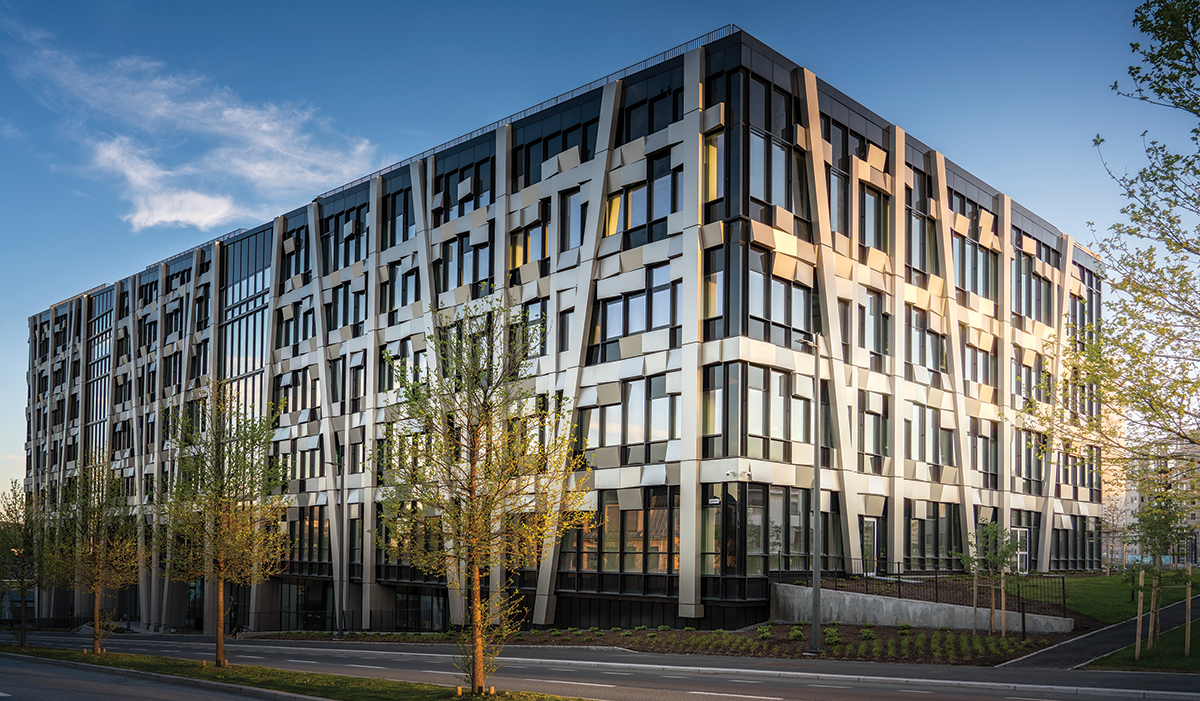
Above: Økern Portal in Norway features more than 32,000 square feet of triple glazing to meet thermal, safety and sound requirements. Twelve different glass assemblies were produced with Super Spacer flexible warm-edge spacer from Quanex in sizes up to 47 inches by 118 inches. The outer panes have a highly translucent, color-neutral solar control coating, Guardian Glass SunGuard SuperNeutral 70S, while the inside has tempered or laminated glass in various thicknesses. Dark Arkitekter was the architect. The aluminum producer was Hydro, Wicona oversaw the façade, and Staticus completed the installation. Glaseksperten A/S from Hjørring, Denmark, was the glass fabricator. Photo courtesy of Quanex.
The glass industry plays an essential role in addressing the climate crisis. Buildings account for an estimated 40 percent of the problem of global carbon emissions, with building operations alone producing 27 percent of total emissions, according to Architecture 2030.
Glass can be a critical component in addressing operational carbon emissions by reducing energy use in existing and new buildings, says Stephen Selkowitz, principal of Stephen Selkowitz Consultants and affiliate at Lawrence Berkeley National Laboratory.
A recent study from Glass for Europe emphasized the difference high-performance glazing can make:
- Replacing all existing windows with “readily available high-performance glazing” by 2030 would cut annual energy use by 29 percent and annual carbon emissions by 28 percent.
- Replacing all existing windows with “improved high-performance glazing” by 2050 would cut annual energy use and carbon emissions both by 37 percent.
Selkowitz estimates similarly dramatic savings for the United States if all existing commercial windows were “magically” retrofitted with next-generation glass technologies, such as highly insulating dynamic glass. “If we convert all windows, we move from a net drain of $20 billion [in energy costs] to a net gain of up to $15 billion [in energy savings],” he explains.
Driving performance
There is more than just energy savings and climate benefits driving the use of higher-performing glass technologies. The market is seeing new codes and standards that will require the use of better glass products. And new legislation is providing major incentives for numerous types of improved glass and glass-related technologies.
Energy Star 7.0
The recently published Energy Star version 7.0 greatly increases thermal performance requirements for windows. Meeting the more stringent performance thresholds in the Northern Climate Zone, which covers about 40 percent of the United States, will require the most advanced double-glazed insulating glass units or, more likely, triple- or quad-glazed IGUs, says Selkowitz. “We will need about 10 to 20 million triple-glazing units per year.”
ASHRAE 90.1
The recently published building energy standard ASHRAE 90.1 2022 includes on-site renewable energy requirements, thermal bridging requirements and additional energy credit requirements, including credit for higher performance fenestration, shading, daylighting, and on-site renewable energy, says Tom Culp, energy code consultant for the National Glass Association and owner of Birch Point Consulting. The new version of the code looks to reduce “energy use by half. And they are on target to hit net-zero by 2031, over the next three cycles,” Culp says. “The codes are moving faster than they ever have before.”
IECC
The in-process 2024 version of the International Energy Conservation Code (IECC) is also “moving very aggressively with strong steps towards electrification and net-zero,” says Culp. Code proposals include new on-site renewable energy requirements that are even higher than in ASHRAE 90.1, new additional energy credits requirements and new thermal bridging requirements.
State stretch codes
New York and Massachusetts are nearing adoption of new stretch energy codes that set more stringent thermal performance requirements than the federal energy codes, says Culp. While the stretch codes are technically voluntary, leaders in big cities such as New York City and Boston are planning to adopt them as the local code requirements. The stretch codes “want to be very aggressive,” says Culp. Where adopted, the codes will require that new buildings include the highest-performing glass units.
Inflation Reduction Act
The Inflation Reduction Act of 2022 includes numerous provisions that will drive performance improvements in buildings. According to Culp, the IRA includes $1 billion in state and local government grants intended to accelerate adoption of the latest energy codes and a zero-energy code. The IRA also expands tax deductions for energy-efficiency improvements in commercial buildings and includes tax incentives for high-performance building products. Two notable inclusions include sizable tax credits for electrochromic glass, and for photovoltaics and building-integrated photovoltaics.
Solutions in glass
This article is part of Glass Magazine’s extensive All About Glass & Metals series for the architectural community and presents a range of next-level performance technologies available from the glass industry. The article spotlights thermal glass products, including improved IGUs, vacuum insulating glass and thin-glass solutions. Additionally, it looks at dynamic glass, which provides solutions for solar control, and at building-integrated photovoltaics, which can provide on-site energy generation.
Article Chapters
All About Glass & Metals
Produced by the National Glass Association, the complete All About Glass & Metals series also includes:
- Glass and wall system definitions
- Current standards and specifications
- Tips by glazing specification section: performance, products and installation
- General tips regarding the specification of interior glass and protective glazing
- Real-world examples of building orientation, interior glass and protective glazing applications
- Process challenges of complex façades
- Market and product trends
- Guide to the high-performance façade equation
Download the series at the NGA store
Of note, high-performance framing systems are crucial to whole-system performance—a high-performance IGU in a poor-performing frame will result in an underperforming glazed system. This article focuses just on advanced performance technologies in the glass unit itself. For additional information on advancements in glazing framing, the role of glass and glazing systems in daylighting design, and additional façade performance considerations, reference the “Guide to the high-performance façade equation” portion of the All About Glass & Metals series.
Advanced IGUs
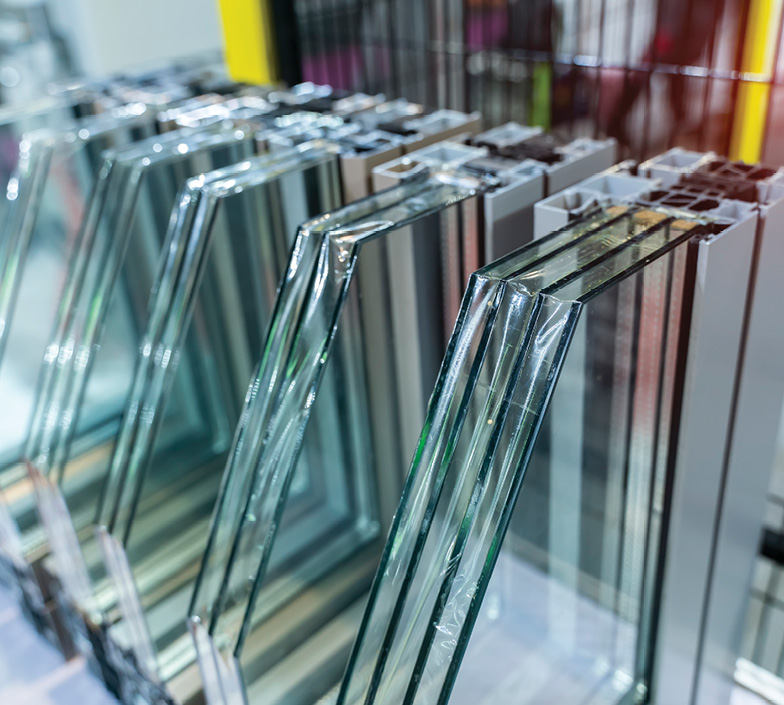
Basics
Widely used in commercial and residential construction since the 1960s, insulating glass units, or IGUs, consist of two or more lites of glass separated by a hermetically sealed air space to provide more thermal, sound and solar insulation than possible with single-glazed fenestration. Advanced IGUs offer additional performance improvements through a variety of methods, including filling the air space with gas (argon, or, for even better performance, krypton), using warm-edge or other higher thermal performance spacers, or adding additional lites (and thus additional cavities) to the unit. For better solar control, low-emissivity coatings can be added to the No. 2 surface, and now, thanks to advancements in coatings, the No. 4 surface, of a traditional double-glazed unit.
Performance
Highly insulating glazing solutions—doubles with improved spacers and two low-e coatings, or multi-cavity units—will likely be required to meet the more stringent energy codes and standards mentioned in the previous section, says Culp. The U-factor requirements in the New York and Massachusetts stretch codes, for example, will push for “triple glazing or fourth surface low-e, with gas fill and better frames,” he says.
The updated Energy Star requirements will also pose challenges. In the previous version, about 80 percent of the residential window market met the .27 center of glass U-factor requirement for the Northern climate. The new Energy Star 7.0 moves that number to a U-factor of .22. Only the very best performing double-glazed units currently on the market would be able to meet the new requirements, Selkowitz says. “For the first time in 20 or 25 years, we’re having to take a hard look at that standard double-glazed, argon-filled, low-e unit.”
History
The double-glazed IGU was patented in the United States in 1865 by Thomas Stetson and was commercialized in the 1930s. According to estimates from Ducker Worldwide, IGUs accounted for about 12 percent of the U.S. market share of new residential glazing in 1970 and quickly grew to about 70 percent by 1980. By 1990, nearly all new windows sold into the residential market were insulating.
The popularity of improved IGUs with low-e coatings accelerated quickly in recent decades, and the product now accounts for about 80 percent of the market, according to Ducker. However, multi-cavity IGUs represent only a slim market share for residential glazing at about three percent.
IGUs with emerging technologies, such as VIG, suspended film or Aerogel, remain more niche performance solutions.
Development
The global insulating glass window market is projected to reach U.S. $17.2 billion by 2026, growing at a compound annual growth rate of 6.1 percent from 2021 to 2026, according to ResearchAndMarkets.com. The growing trend of green rating systems in various countries is likely to contribute to the growth of the insulating glass window market, with North America projected to be the largest regional market.
The insulating market has also become more complex with the addition of several emerging insulating glass technologies that offer a step change in thermal performance. Such technologies include vacuuming insulating glass and thin-glass multi-cavity IGUs, which are both explored in-depth later in this article. Other technologies include IGUs with a suspended film, which has been available on the market for several decades, or units with Aerogel in the cavity, which is currently available but only in a translucent state.
Challenges
The North American insulating glass market has faced challenges moving beyond traditional double-glazed units. Traditional multi-cavity IGUs, while popular in Europe, have gained only minimal traction in the United States. “There are obstacles to triple pane. Many manufacturers say it is too heavy, too wide, too expensive. It has long ROIs,” says Selkowitz.
The industry is also facing new challenges with krypton gas-filled insulating units. Krypton had gained popularity in recent years as a higher-performing gas option for IGUs. However, the cost of krypton has increased due to higher demand for krypton in the communication sector and due to new difficulties in accessing krypton, which is sourced in large part from Ukraine and Eastern Europe, says Selkowitz.
Resources
The NGA published the Performance Improvements in IGUs glass technical paper in 2016 and updated it in 2022. The document was developed by volunteers from the following industry companies:
Additionally, watch a webinar from Selkowitz discussing the latest IGU technologies, and the research and development still in progress, that will aid in the reduction of a building's carbon footprint and bring us closer to the goal of a net-zero energy building
Building Integrated Photovoltaics

Basics
Building-integrated photovoltaics are solar energy-generating systems incorporated into a building envelope. BIPVs can be used in windows, façades, canopies, skylights and more, providing opportunities for energy generation on all surfaces of a building. Glass is an essential component in most BIPV products, protecting solar cells and modules while maximizing solar and light transmission.
Performance
BIPV meets the requirements for sustainability and integration of alternative sources of energy. Growing the use of on-site renewable energy is critical to achieving net-zero energy and carbon targets and will also help increase grid resiliency and U.S. energy independence, according to the NGA document High-Performance Glazing Promotes
Building Resiliency.
New versions of the energy codes, including the recently published ASHRAE 90.1 2022 and the in-development 2024 IECC, include requirements for on-site renewables, which would include BIPVs.
History
Photovoltaic technology was invented in 1954 when Daryl Chapin, Calvin Fuller and Gerald Pearson developed the silicon PV cell at Bell Telephone Laboratories, according to the U.S. Department of Energy’s Energy Efficiency and Renewable Energy office. BIPVs came to fruition in the 1990s. The evolution of the technology in recent years has helped it to become more mainstream, says Jemssy Alvarez, product manager with Vitro.
Development
Alvarez says he expects to see BIPV in more places in and around buildings as owners and architects look to more sustainable energy sources. “I think you’re going to start seeing park benches that are going to have solar panels installed so people utilizing those facilities will have the ability to charge their phones; and more atriums and canopies and skylight applications with PV integrated because it’s a natural fit,” he says.
Additionally, industry manufacturers have developed BIPV products that offer a range of aesthetic options for designers, including transparent or near-transparent BIPVs that offer the benefits of traditional glass systems while generating energy.
“Transparent solar window products are aesthetically pleasing and energy efficient windows. They look and function like traditional windows, but also double as renewable energy generation sources that help provide clean electricity to the home or building,” says Veeral Hardev, vice president of strategy for Ubiquitous Energy.
Ubiquitous Energy is in the early commercialization phase with transparent solar window products, says Hardev. “We are currently building our first high-volume transparent solar window manufacturing facility here in the U.S. We expect that this facility will start producing window units as large as 5 feet by 10 feet in 2025,” he says. “These window units will be sold into the residential and commercial markets directly through our partners, including [Andersen Windows & Doors], as well as commercial building developers and contractors.”
Challenges
A challenge of BIPV is cost. Alvarez says it’s hard for BIPV to compete with the pricing of what someone will pay in electricity. “However, in time, the cost of energy isn’t going to get any cheaper and at some point, there’s going to be a parity between what you can do with these renewable sources and what it will cost you from the standard,” he says.
Resources
The NGA developed the Glass Properties Pertaining to Photovoltaic Applications as a primer on the role of glass in photovoltaics, including the types of glass used, and the roles of glass as both a cover or backing for photovoltaics. Find an abridged version of this document on page 15 of the current issue of Glass Magazine.
The document was originally developed in 2014 (updated in 2019).
Download the complete glass technical paper
Vacuum Insulating Glass
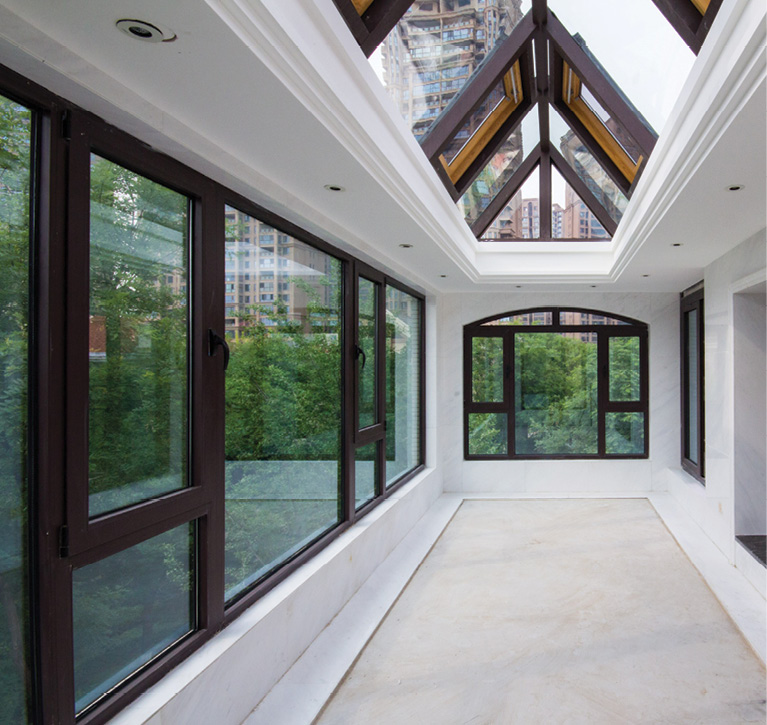
Basics
In vacuum insulating glazing, or VIG, two glass panes are hermetically sealed together around the edges, separated by micro spacers, and the air between the glass panes is extracted. The vacuum is very effective at minimizing conduction and convection heat losses, lowering the U-factor at a very thin cavity depth.
Performance
VIG’s overall insulating performance rivals that of traditional windows with an R-value of 10, approaching a properly insulated wall rated at 12 or higher, says Daniel Sutton, product manager for Vitro Architectural Glass.
“Historically speaking, the insulating value of windows has been dramatically less performing than a wall with insulation,” he says. “With vacuum insulating glazing, now you’re leveling the playing field in terms of the insulating performance that is roughly on par with wall insulation.”
History
The concept of VIG was first described in a 1913 German patent by Zoller. The first commercial VIG product, Spacia, was launched by Nippon Sheet Glass in 1996.
Development
“Where VIG is going, it’s now getting into bigger sizes with architects and designers. The bigger the size, the bigger the windows, the better we can get more natural light in,” Sutton explains.
Additionally, manufacturers will begin moving toward temperature/heat-strengthened glass because of its versatility, Sutton says.
Challenges
VIG comes with some fabrication challenges. According to NGA’s technical paper on VIG, the units are limited in size. Units must have at least two 90-degree corners and shapes are limited to fairly simple parallelograms or simple arcs. VIG is also not available as bent glass.
Sutton says another limitation with VIG is its dependence on what low-e coating is used within the vacuum space; hopefully, as the technology evolves there will be more freedom to use different high-performing low-e coatings to meet different energy restrictions or energy code mandates.
A limitation of VIG is that there is limited North American-based domestic sourcing for VIG, so access and cost can be a challenge. Sutton says Vitro hopes to mitigate this in the future and begin VIG manufacturing in the U.S.
Resources
The NGA developed the Vacuum Insulating Glazing glass technical paper to offer guidance on VIG market applications, performance and size applications. Energy performance, acoustic improvements, size and shape options, as well as testing standards, and a thorough list of terminology specific to VIG are also outlined in the technical paper.
The document was developed by volunteers from the following industry companies:
- NSG Group, Pilkington North America (task group chair, Kayla Natividad)
- AGC Glass Co. (now part of Cardinal Glass Industries)
- VIG Technologies LLC
- Viracon
- Vitro Architectural Glass
Thin Glass
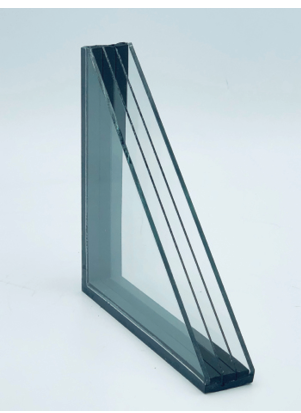 Basics
Basics
The glass industry is looking to thin glass—generally considered any glass less than 1.6 millimeters thick—in two key applications to greatly improve window system thermal performance. First is the use of thin glass used as interior lite or lites in multi-cavity IGUs. The second, more recent, application is thin glass in window retrofit systems.
Thin glass is produced in two methods: horizontal float soda line (a process used by NSG Group) and vertical fusion drawn boro-aluminosilicate (a process used by Corning).
Performance
Thin glass when used in a multi-cavity IGU allows for large thermal performance improvements without adding much weight. Additionally, thin-glass IGUs are much thinner than traditional multi-cavity IGUs and can more easily be accommodated by existing framing systems. https://cryptogamingca.com/
“With the thin triple, you get about an R-8 center of glass,” says Selkowitz. “And if you have a slightly larger and wider glass package, you can add two pieces of thin triple glass (making a quad IGU) and get R-14 center of glass. … This is great news as it offers new opportunities for glass to provide improved thermal comfort, reduced HVAC size and deeper energy savings.”
Development
Thin-glass triple glazing was invented by Selkowitz in the late 1980s, achieving an invention registration in 1991. However, “no one wanted triples back then and thin glass didn’t exist,” Selkowitz says. Then came the fast emergence and growth of smartphones and flat-screen televisions in the 2000s, which created a new market for thin glass.
Today, thin glass is readily available and affordable. “There is a whole industry out there that knows how to make, cut and transport thin glass. It’s a pretty fast learning curve to bring this to industry,” Selkowitz says.
Thin-glass multi-cavity IGUs have been produced in North America for several years by Alpen High Performance Products, says company president Brad Begin. The company began working with the U.S. Department of Energy on developing thin-glass triples for commercial use in 2018. By 2019 it launched it as a product offering following extensive testing and field validation. By mid-2023, the company expects to pass a million square feet of thin-glass products sold into the market for both commercial and residential applications.
“Thin triples are at niche volume now, but [the technology] has the potential to be more mainstream,” says Selkowitz. “From the technology side, there is nothing to hold it back. The price is fine. The handling is fine. What’s needed is the market pull side.”
Thin-glass retrofit products are newer but are already at the installation stage. Alpen received a patent for its thin-glass high-performance secondary window in 2021. Begin says that retrofit products help to address the “real elephant in the room, which is trying to address how we make existing buildings better. … On the commercial side, even though half of the U.S. building stock [has] single or low-performing double [windows], only a very small percentage of existing stock does anything with replacement or upgrade.”
Challenges
“The one thing you can’t do with thin glass is temper it,” says Selkowitz. However, there is ongoing research in the industry to address tempering issues and Begin notes the industry has “six different market-ready solutions that solve the issue.”
The thin-glass industry has also been limited by size. Though Begin says Alpen sources thin-glass sheets that are typically 50 to 60 square feet, with access to sizes of 70 square feet or larger.
Resources
The January NGA Glass Conference: Miramar Beach included two presentations on thin triples:
- Thin Triple Glazings: Potentials, Status, Futures Concept → Products, by Selkowitz
- Thin Glass from a Fabricator Front Line Perspective, by Begin
The presentations will be available as webinars from the NGA in late 2023.
Dynamic Glass
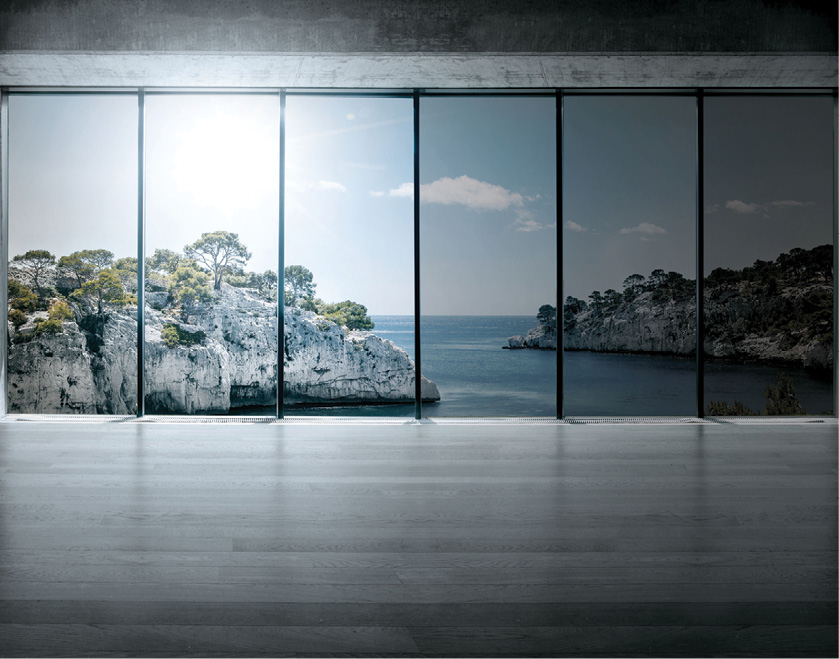
Basics
Dynamic glass, sometimes referred to as smart glass, switches between clear and tinted states on demand, providing glare control and reducing a building’s energy load for heating, cooling and lighting while offering unobstructed views. Dynamic glass technologies make it possible to change the light transmission characteristics of the glass at required times. These features make it an efficient and environmentally friendly tool for filtering heat and light for more efficient climate control in enclosed spaces. While the glass industry produces smart glass products intended to provide privacy solutions, this section focuses on switchable products designed for solar control.
Performance
There are currently three primary technologies for dynamic glass that are used in the built environment: electrochromic, photochromic and thermochromic. The principle common to them all is the use of materials whose exposure to electrical voltage, heat or sunlight changes their composition and consequently their color and texture.
Electrochromic glass technology uses a small DC voltage to change a thin coating from clear to tinted and darken the interior of a piece of glass, all within only a few minutes. This color-changing technology can block 99 percent of sunlight and is considered one of the most energy-efficient solutions, contributing greatly to LEED scores in architecture. Photochromic glass materials change their color composition when exposed to ultraviolet wave radiation, usually from sunlight, and darken while absorbing the light and heat of the sun. And thermochromic glass materials change color and darken when exposed to higher temperatures.
The electrochromic technology segment dominated the global smart glass market, according to Grand View Research, with a share of 83.6 percent in 2021 due to low driving voltage, high blockage ratio of ultraviolet (UV) rays and capability to integrate with large glass panels.
History
Dynamic glass products have been around for over 100 years and are only recently being implemented and some are based on modern discoveries. The science behind the electrochromic process goes back to patents in 1843 from Scottish engineer Alexander Bain, while thermochromic glass was under development in laboratories as early as the 1960s and the first photochromic technology was offered in 1966 by Corning Glass Works Inc.
Development
Over the past few decades, advancements in smart window research have moved the technology well beyond the lab. The market for smart glass is expected to reach $7.5 billion by 2028, according to Grand View Research. Additionally, according to Culp, the adoption of smart windows is expected to grow quickly with the Inflation Reduction Act adding dynamic glass to the Investment Tax Credit, covering up to 30 percent of the costs associated with dynamic glass for eligible projects and moving it towards cost parity with traditional glazing and shading solutions.
Next-generation thermochromic windows may use different materials that absorb light instead of reflecting it, creating a continuous tint as temperatures rise, similar to electrochromic windows. One thermochromic material that’s long been studied is vanadium dioxide (VO2), which can transition at higher temperatures (about 154 degrees Fahrenheit), increasing its ability to reflect infrared light. This allows visible light to continue to stream in, brightening the room, while lowering the amount of incoming heat, keeping the room cooler.
Challenges
Electrochromic glass, the most common technology for switchable glass, does have limitations when it comes to switching speed and shows characteristics of blue glass appearance in the tinted state. There are also challenges for widespread use, such as expense and an installation process that requires some additional training.
Resources
The NGA published the glass technical paper Dynamic Glazing for High Performance Buildings, which discusses the characteristics of dynamic glazing that can mitigate against the influence of the sun. The paper was updated in 2018.
The NGA’s current Dynamic Glazing task group includes volunteers from the following companies:
All About Glass & Metals from the NGA
Produced by the National Glass Association, the complete All About Glass & Metals series also includes:
- Glass and wall system definitions
- Current standards and specifications
- Tips by glazing specification section: performance, products and installation
- General tips regarding the specification of interior glass and protective glazing
- Real-world examples of building orientation, interior glass and protective glazing applications
- Process challenges of complex façades
- Market and product trends
- Guide to the high-performance façade equation



